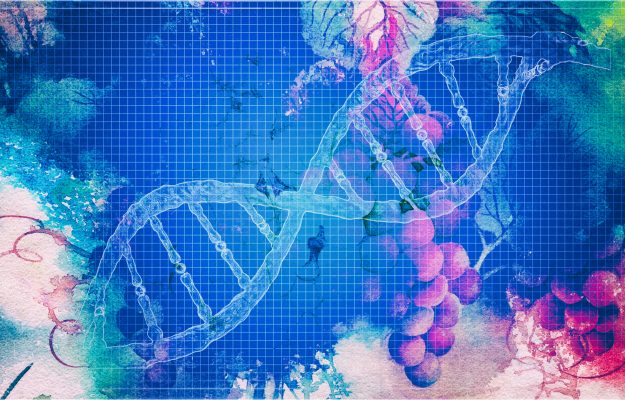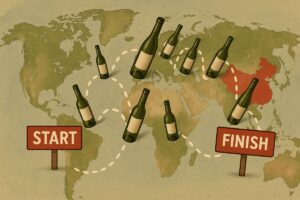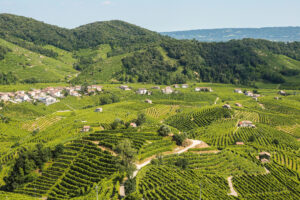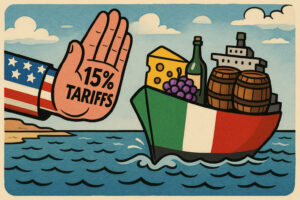In spite of different convictions and visions, all of which are legitimate, there is one fact: in the world, in every sector, research is progressing, new knowledge and technologies are being put into practice and, in some areas of the world, are already a reality in production processes. This is one of the reasons why the great debate on the advance of genetics in the wine sector, supported by some and seen as the main tool for combating disease and climate change, and opposed and seen as a risk by others, but increasingly in the spotlight in recent months, is also a debate on the future of Italian wine and its competitiveness.
But it is a very complex issue, between different genetic techniques, European and Italian regulations, and different visions, on the priorities to be addressed, even within the same “pro-genetics” scientific community, to simplify. As emerged in the debate on “new viticultural models in the light of modern genetic technologies and European policies”, staged today in the form of a webinar by the Alleanza delle Cooperative, with authorities on genetic research applied to viticulture such as Prof. Attilio Scienza of the University of Milan, Michele Morgante of the University of Udine and Mario Pezzotti of the Edmund Mach Foundation in San Michele Adige, as well as Paolo De Castro, MEP and member of the Committee on Agriculture and Rural Development of the European Parliament, and Stefano Vaccari, Crea director. They were called upon to shed light on a fundamental issue because, as Luca Rigotti, head of the Wine Sector of the Alleanza delle Cooperative, but also of Copa-Cogeca and president of Mezzacorona (one of the best Italian and international wine cooperatives, ed) pointed out, “we cannot avoid technological progress in the wine sector. Also in the light of the new dictates of “Farm to Gork” and the role it plays in society and for environmental sustainability. We need to put technology and the regulatory system together as quickly as possible to ensure the competitiveness of Italian wine, to achieve the objectives set by EU policies, but also to work increasingly ethically, and to ensure the healthiness of both the products and the territories in which we work”.
For Italy, everything is obviously moving within the European framework. At the end of the year, Europe gave the green light to the use of so-called “resistant vines”, which are also authorized for PDO and PGI wines. For many, this is a revolution, even if it will be far from rapid and will have to be examined by the regulations, and therefore by the Consortia, which are the expression of the producers. Outlining the state of the art, at European level, was Paolo de Castro: “The new CAP, from January 1, 2023, will bring the important novelty of Strategic Plans, with the flexibility given to Member States to construct national plans that will transform them into concrete actions. For wine, one of the important innovations will be the strengthening of the role of the Consortia within the CMO, together with new tools for risk management and other novelties. In general”, explains De Castro, “they combine the environmental dimension, strengthened by eco-schemes, with the economic dimension and the objective of making our companies stronger on the market. Moreover, the CAP (Common Agricultural Policy) is bound to respect workers’ rights. The resources are there, more or less similar to the previous programming, but they will be distributed differently: there will be losers and gainers, and this will make the application of the new CAP very complex. All this will be gradual until 2026.
But one of the most important aspects is that the “Farm to Fork” strategy emphasizes the drive towards chemical reduction. And in this sense, one of the most interesting tools is Tea, the Assisted Evolution Techniques, which are not GMOs, and are giving extraordinary results in the field of chemical reduction by putting in place varieties resistant to diseases such as downy mildew and powdery mildew. We expect Health Commissioner Stella Kyriakides to clarify the difference between old GMOs (genetic modifications between species) and these genetic improvement technologies. In this sense”, De Castro stressed, “the study by the Digital Tech Commission, which highlighted the difference between GMOs and Tea, was fundamental, clearing the field of ambiguity and creating the conditions for the Commission to clarify at a legal level that these are “traditional” improvement technologies. As a Parliament we will do everything to speed up, it is a concrete tool to achieve the goal of reducing chemicals. Diseases do exist, and we must provide our farmers with the tools to fight them: precision agriculture but also, precisely, genetic improvement technologies. We expect new EU regulations by 2022, but we must work to underline how important it is to stress this difference with GMOs, which have ad hoc legislation and are banned in 16 EU countries. A regulatory process that is anything but simple, but which is just as important as the scientific aspect.
Professor Attilio Scienza (University of Milan) explained: “I believe that when we talk about genetics, the key words are “territory” and “resistance”. The European “Green Deal” tells us that by 2050 the use of chemical pesticides and antibiotics in agriculture must be reduced by 50%, the use of fertilizers by 20%, and that 25% of the land must be organic. So the question is: do we go ahead with chemicals or genetic improvement? Historically, Italian and European winegrowers have had little inclination towards genetic innovation. Varieties derived from crosses such as Muller Thurgau, Manzoni Bianco, Albarossa, Merlese, Rebo and so on do not make it to 2000 hectares out of 660,000 in the Italian vineyard. Yet, there has been great progress, and in Italy, for example, 20 varieties of so-called Piwi vines were registered in 2020. And research by universities such as the University of Udine or the German University of Geisenheim has shown that wines from restistant grape varieties, as well as those from traditional vitis vinifera varieties, are strongly influenced by the vintage, have good metabolic stability and so on. Today in Italy, many regions in the north are experimenting, but there are only 1,050 hectares, 700 of which are managed by the University of Udine with resistant vines. This is also due to the regulatory framework. Although the European Union has given the go-ahead for their use in PDO and PGI wines, in Italy many vines obtained from crosses, especially if they are interspecific hybrids between vitis vinifera and American or Asian species, are registered with restrictions at the margin, and therefore cannot be used for designation wines. In France, for example, resistant varieties such as Artaba, Vidoc, Floreal and Voltis can already be used to produce Champagne and Bordeaux. French research is pushing hard, it is a priority for the sector, the aim is to make France the reference point for the production of wine with a low environmental impact. The French have a national project to enhance their native varieties with resistant vines, we don’t, if we don’t open up widespread research, even if a lot is being done. The fundamental objective”, Scienza goes on to explain, “is to make wines of absolute quality, to combine tradition and innovation, to allow a tangible reduction in treatments (and costs) and to enable the creation of environmentally sustainable vineyards. But in Italy, as always, bureaucratic slowness penalizes us. And some things could be done quickly. It would be important, for example, to open up the use of resistant vines for IGT wines, with the possibility of claiming the vine variety on the label. It would also be important to introduce mutuality of cultivation authorization between neighboring regions. And then there’s the whole issue of communication, because the consumer has to be won over. And here”, explains Scienza, “we need to continue to talk about terroir, about native vines, but in modern terms, modernizing the concept of native, and considering it to be a vine that expresses the best of its genetic potential in a given place: think of Sangiovese, which was born in the south but develops its best in Tuscany. And the role of genetics for sustainability, and also in relation to climate change, needs to be well explained to consumers. Also, looking at the new resistant vines, we need a new varietal enology. And then we should also develop an in-depth study of nutraceutics, i.e. what the new resistant varieties can bring to the diet”.
But while the creation of new wine grape varieties is one way forward, another way - not in opposition, but parallel - is the improvement of resistant varieties, which is all the more important when it comes to historical vines that are the very basis of important denominations such as Nebbiolo for Barolo or Sangiovese for Brunello di Montalcino, explained Professor Michele Morgante of the University of Udine. “Without a doubt, genetic innovation is fundamental to reduce the environmental impact of agriculture. Vine varieties”, said Morgante, “are mostly 100/200 years old, and the exploitation of genetic variability has been limited to using clonal selection within the same varieties. New resistant varieties have already been patented and are available, but in the world of wine we must overcome the concept of “purity” of the breed, which recalls dark periods in our history. Furthermore, we have characterized these varieties by analyzing their genome: the DNA of vitis vinifera now accounts for over 90% of the total, and these are varieties that are now almost vitis vinifera, looking at the 19 chromosomes that make up the vine chromosome. Having said that, it is difficult to think that today those who make Barolo or Brunello can replace Nebbiolo and Sangiovese; sustainable solutions have to be found, and here too genomics can be used, individual genes responsible for disease resistance, for example, can be modified in a targeted manner. It’s a technology that allows tradition to evolve. As is well known, there are two possible technologies, Morgante added, namely “cisgnesis”, a genetic engineering operation in which I insert a gene from the same species or from a compatible species, thus analogous to the modification I would make by traditional cross-breeding, but in a much shorter time. The other is “Genome Editing”, a kind of 'molecular scissors' that cut the DNA to obtain the genetic mutation I want, and which will be indistinguishable from spontaneous or induced mutations. For example, by inactivating a 'susceptibility' gene that the pathogen uses to penetrate plant cells, they make it impossible for the pathogen to infect the plant. These are all feasible things”, Morgante added, “but research is not enough, nor is a system that allows you to move from research to production. We need a set of rules that is adequate and up-to-date with current technological developments, and then acceptance by the consumer. There are regulatory problems: these technologies are still treated as transgenesis, despite the fact that the European Food Safety Authority has already said several times that products obtained in this way are very similar to products obtained by traditional genetic improvement. Then, in any case, we have to convince the consumer, we have to tell things in a different way, we have to explain that we are at the beginning of a revolution in agriculture that will pass through Tea, precision agriculture, digitalization, and if we embrace these innovations we will achieve the objectives of the “Farm To Fork”, but we must also explain that innovation is essential to preserve the traditional varieties and the heritage of Italian enology that we have”.
In any case, Professor Mario Pezzotti added, “we have to be secular in the debate, different paths have to be imagined for new resistant varieties, and for traditional varieties with resistance. But a lot of time is needed, with crosses and selections from greenhouses to open fields. These are feasible processes, but they take between 10 and 15 years and require major investments in terms of money, human resources, land and greenhouses. The scenario is interesting and evolving. Thanks in part to Italian studies, the genome of the vine has been sequenced, and it is now possible to identify genes and intervene in a subtle manner, on several fronts. Now, for example, we are focusing on disease resistance, but we are also working on resilience to climate change, which is another major issue”.
In order to make real progress, however, it is essential that the “assisted evolution techniques are tested in the field, producers must understand that some of these varieties resulting from research should be included in the specifications, to make better and better wines, with the same varieties, perhaps with more organic farming and less treatments”, added Stefano Vaccari, Crea director, “but we also need awareness of the value of wine, and the willingness to invest in it. To experiment in the field”, added Vaccari, “we don't need to wait for Europe. We have already presented, together with the President of the Agriculture Commission of the Chamber of Deputies, Filippo Gallinella, a bill for a simplified procedure that allows authorizations in two months, and not in two years as now. We hope it will be approved soon. There are countries like the US and China that are already marketing products obtained with assisted evolution techniques, while we cannot even experiment with them in the field. It’s a huge challenge, and we have to be ready. We have the CAP, which is 60 years old, and its primary objective is to improve agricultural production through innovation”.
Copyright © 2000/2025
Contatti: info@winenews.it
Seguici anche su Twitter: @WineNewsIt
Seguici anche su Facebook: @winenewsit
Questo articolo è tratto dall'archivio di WineNews - Tutti i diritti riservati - Copyright © 2000/2025


























































































































































































